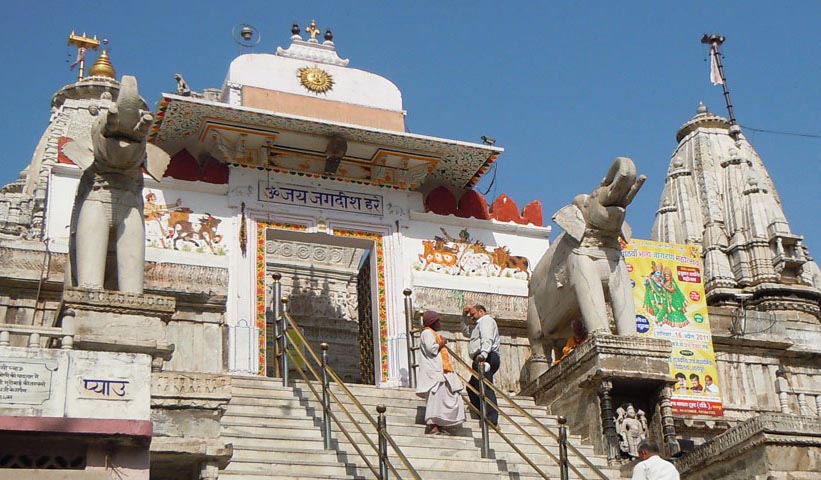Jagdish Temple

Information of Jagdish Temple, Udaipur, Rajasthan
Laxmi Narayan temple also know to as Jagannath Rai Temple or Jagdish Temple is located inside city palace complex, in the heart of the district of Udaipur, in the state of Rajasthan, in Northwestern India. This shrine is largely dedicated to Lord Laxmi Narayan who is a form of Lord Vishnu, the preserver of the Universe. The temple was built by Maharana Jagat Singh in: 1651 A.D. The significant highlight of this temple is its intricate carvings on pillars. This shrine is easily accessible from the city of Udaipur as it is situated in the middle of the city. It is one of the famous shrines of Udaipur. It is based on the Indo-Aryan style and pattern of architecture. It is also the largest temple of Udaipur. It is to be remembered that from the Bara Pol of the City Palace, the gateway of this shrine can be clearly sited at a distance of approximately 150 meters. It is one of the most frequented and most sought after temple of the city of Udaipur by its domestic and foreign visitors, tourists, adherent devotees and pilgrims with great faith and devotion.
Jagdish Temple Religious Significance
The original name of Jagdish temple is "the temple of Jagannath Rai" but is at present affectionately called as Jagdish-ji. People visit this temple in order to participate in the Aarati conducted for the Lord in the early morning, mid-noon and late evening hours. They seek the blessing of the Lord for their endeavors in personal and professional life. According to the local legends and religious scholars, this Lord is wish fulfiller in a satisfactory manner. Devotees who pray to this Lord with total dedication and commitment can witness miracles happening in their life. At this shrine, special poojas, homams and yagnas are conducted on festive days and auspicious days with a lot of perfection. The priests also advice the devotees and pilgrims regarding the religious affairs and rituals conducted for their well-being.
Jagdish Temple Architectural Significance
Jagannath Rai temple is a wonder of architecture. This three-storied building structure of this temple largely comprises of painted walls and lush halls, decorated ceilings and beautifully carved pillars. It was built at a cost of nearly 1.5 million rupees. The spire of the main shrine is about 79 feet high which actually undoubtedly dominates the present skyline of the city of Udaipur. The shrine's shikhar is perfectly festooned with attractive sculptures of elephants, dancers, musicians and horsemen making it right sight to behold. At the entrance, there are two huge stone elephants that welcome the visitors wholeheartedly. At the front of the entrance, there is an inscription that mentions the contributions made by Maharaja Jagat Singh. A fleet of 32 marble steps led to this temple. On the way of the marble step, there is a brass image of Garuda which is a figure of half-man and half-eagle. This idol regarded as standing guard at the doorway of Lord Vishnu. The striking four-armed image of Lord Vishnu is installed in the main sanctum of the temple. It is made out of a single black stone. There are four sub-temples dedicated to Lord Shiva, Goddess Shakti, Sun God and Lord Ganesha. The temple is strongly believed to be build as per the Hindu architectural science of 'Vastushstra'.
- Andhra Pradesh Temples
- Assam Temples
- Bihar Temples
- New Delhi Temples
- Goa Temples
- Gujarat Temples
- Jammu and Kashmir Temples
- Karnataka Temples
- Kerala Temples
- Madhya Pradesh Temples
- Maharashtra Temples
- Odisha Temples
- Punjab Temples
- Rajasthan Temples
- Sikkim Temples
- Tamil Nadu Temples
- Telangana Temples
- Uttar Pradesh Temples
- Uttarakhand Temples
- West Bengal Temples